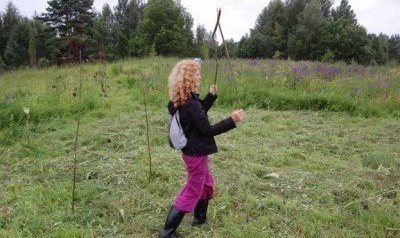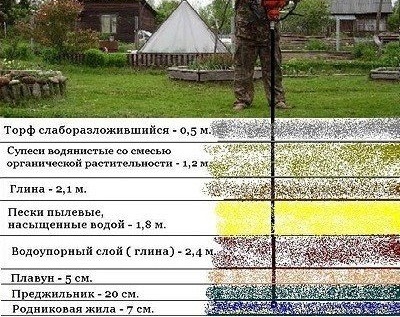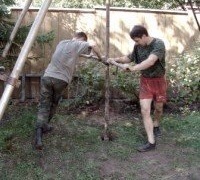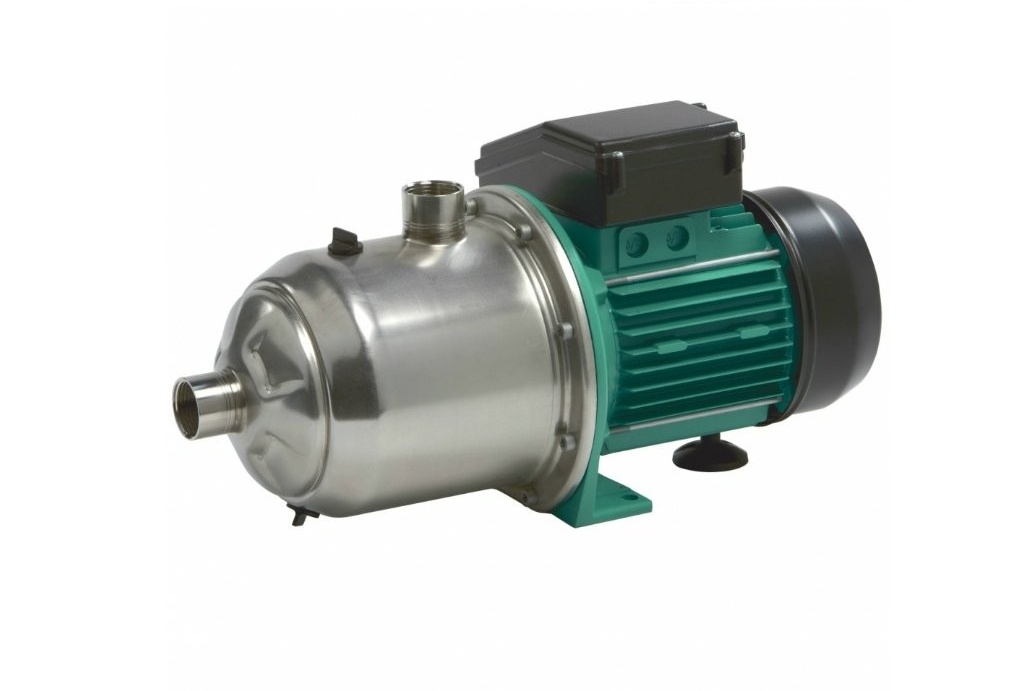How to find water for a well: an overview of "grandfather" and modern search methods
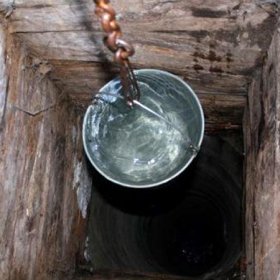
Having received a plot for the construction of his own house or cottage, the owner first of all thinks about supplying water, because without it you can’t even fill the foundation. But if there is no central water supply nearby, and you don’t feel like carrying every time in barrels, then it makes sense to dig your own well. So you and the family will provide clean water, and you can begin construction. But the question arises: how to find water for a well if you have never encountered this before? Do not dig the entire site!
In fact, the problem of finding water has long been resolved, and there are many methods by which it is determined where the aquifer passes. Any owner can handle this. For a more accurate analysis, it is better to try several options and make sure that the place for digging the well is selected correctly.
At what depth should the aquifer be located?
Water-resistant layers keep the earth in the ground, which prevents the veins from breaking into the ground or going too deep. Such layers, as a rule, consist of clay, but there are also stone ones.
Between them is an aquifer of sand, saturated with clean water, which must be sought. Since the water-resistant layers are located not strictly horizontally, but with all kinds of bends, in the places of curvature niches with an increased level of humidity are formed, which are called underground lakes.
When searching for water for a well, you can get to the lake, which is very close to the surface - only 2.5 m deep. The water in it is called the high water because it is replenished with precipitation, melting snow, carrying dirt and a lot of harmful substances. Such an aquifer for a well is not suitable both in terms of liquid quality and quantity. In a drought, your well will simply dry out, because an underground lake with a hatching holds a small volume of water, and if it is hot summer, it will leave it altogether and will not return until late autumn.
The well needs water from the lakes, which are located about 15 m deep into the ground. There are aquifers of continental sand, the thickness of which is so great that it is able to nourish a huge amount of cubic meters of water. And these sands serve as excellent filters, thanks to which the water is maximally cleaned of impurities and debris and becomes suitable for drinking.
"Grandfather" methods of water search
Wells have been digging since ancient times, so the most successful methods used by our ancestors have survived to this day.
Analysis of plants growing on the site
Plants can tell if there is an aquifer in your area, and at what depth it is located. If coltsfoot, sedge, alders, birches grow well on the earth, then there is water under you, and not deep.But the pines, in which the root system is able to “bury” to a great depth in search of water, indicate that the distance to the aquifer is considerable.

Plants growing on a site can tell about the level of groundwater occurrence (click on the image to enlarge)
Pet observations
Observe on hot days how your dog behaves. Usually dogs start looking for the wettest (and therefore cool!) Places, dig a hole in them and go to bed. So, an aquifer passes in this place.
For example, a horse that is thirsty will begin to beat with a hoof in a place where it feels near water. Also, in the evening, pay attention to where the midges "hustle" on the site. They choose a place with high humidity.
Weather study
In the evening after the summer heat or in the early morning, observe the territory. In places where water is close to the surface, the level of humidity will manifest itself in fog, which will spread along the ground or go out in clubs. Moreover, by the density of the fog, you can determine the depth of groundwater: the denser it is, the closer it lived.
Desiccant Weighing
You can also learn about the saturation of the earth with water by weighing moisture absorbers - materials that can absorb moisture. Previously, only red brick played this role, and today silica gel has been added to it.
Procedure:
- Find an unglazed clay pot.
- Break the red brick into pieces and carefully dry it in the oven. If you use silica gel, crushing is no longer necessary, but it is necessary to dry it.
- Pour the prepared dehumidifier into the pot and weigh.
- Wrap with non-woven material and bury it 0.5 m into the ground.
After a day, take out and re-weigh. The greater the difference in mass, the closer the water.
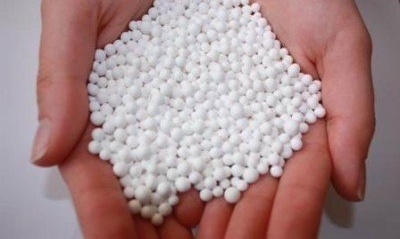
It’s best to use several pots of silica gel in different places at once to determine which zone the aquifer is closer to the ground
For the purity of the experiment, teach that in the previous days, before you look for water for the well, precipitation should not have occurred, otherwise the earth will be wet, and the pot will nourish the water that has fallen from the surface. The desiccant is only buried in dry soil.
Professional methods for finding water
Checking with a vine or electrodes
A more professional way is dowsing.
But not everyone manages to "make friends" with such a device.
Search Order:
- First, on a willow, two branches are found emerging from the same trunk and located at an angle to each other.
- This “fork” is cut off and thoroughly dried.
- The finished frame is brought to the site, taken by the edges of the branches, spreading them about 150˚ so that the trunk looks up.
- With a vine slowly walk around the site.
- In places where there is an aquifer, the trunk will begin to lean towards the ground.
The frame gives the most accurate readings in the morning (from 6.00. To 7.00.), In the afternoon (from 16.00. To 17.00) and in the evening (from 20.00. To 21.00.).
A similar effect has devices from the electrodes. 2 rods must be bent with the letter “G” and carried in hands so that the free part is horizontal. In the place of the aquifer, the electrodes begin to spin, cross.
The disadvantage of such a study is that the framework responds not only to the deep layers, but also to the tip. Paved underground communications can also “confuse” them.
Exploration by drill
The most accurate of all methods is considered exploratory drilling. For this, it is necessary to drill a hole deep into the earth for six meters or more with an ordinary garden drill. If you stumble upon a core, do not rush to dig a well right away. First, take water for analysis to a sanitation station to make sure its quality.
Only after positive results proceed with digging the well.
A combination of several methods will increase your chances of finding the best water.

